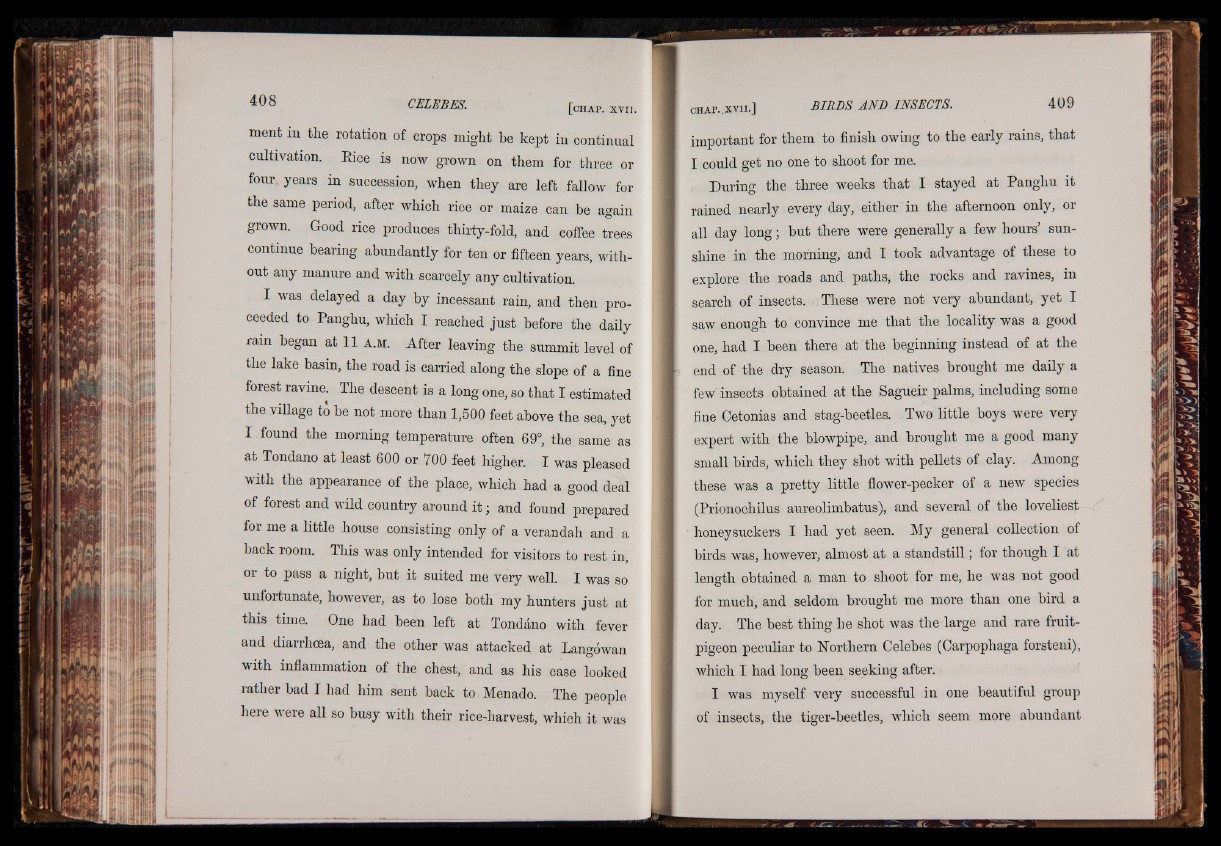
ment in the rotation of crops might he kept in continual
cultivation. Bice is now grown on them for three or
four years in succession, when they are left fallow for
the same period, after which rice or maize can be again
grown. Good rice produces thirty-fold, and coffee trees
continue bearing abundantly for ten or fifteen years, without
any manure and with scarcely any cultivation.
I was delayed a day by incessant rain, and then proceeded
to Panghu, which I reached just before the daily
rain began at 1 1 a .m . After leaving the summit level of
the lake basin, the road is carried along the slope of a fine
forest ravine. The descent is a long one, so that I estimated
the village to be not more than 1,500 feet above the sea, yet
I found the morning temperature often 69°, the same as
at Tondano at least 600 or 700 feet higher. I was pleased
with the appearance of the place, which had a good dekl
of forest and wild country around i t ; and found prepared
for me a little house consisting only of a verandah and a
back room. This was only intended for visitors to rest in,
or to pass a night, but it suited me very well. I was so
unfortunate, however, as to lose both my hunters just at
this time. One had been left at Tondano with fever
and diarrhoea, and the other was attacked at Langowan
with inflammation of the chest, and as his case looked
rather bad I had him sent back to Menado. The people
here were all so busy with their rice-harvest, which it was
important for them to finish owing to the early rains, that
I could get no one to shoot for me.
During the three weeks that I stayed at Panghu it
rained nearly every day, either in the afternoon only, or
all day long; but there were generally a few hours’ sunshine
in the morning, and I took advantage of these to
explore the roads and paths, the rocks and ravines, in
search of insects. These were not very abundant, yet I
saw enough to convince me that the locality was a good
one, had I been there at the beginning instead of at the
end of the dry season. The natives brought me daily a
few insects obtained at the Sagueir palms, including some
fine Cetonias and stag-beetles. Two little boys were very
expert with the blowpipe, and brought me a good many
small birds, which they shot with pellets of clay. Among
these was a pretty little flower-pecker of a new species
(Prionochilus aureolimbatus), and several of the loveliest
honey suckers I had yet seen. My general collection of
birds was, however, almost at a standstill; for though I at
length obtained a man to shoot for me, he was not good
for much, and seldom brought me more than one bird a
day. The best thing he shot was the large and rare fruit-
pigeon peculiar to Northern Celebes (Carpophaga forsteni),
which I had long been seeking after.
I was myself very successful in one beautiful group
of insects, the tiger-beetles, which seem more abundant